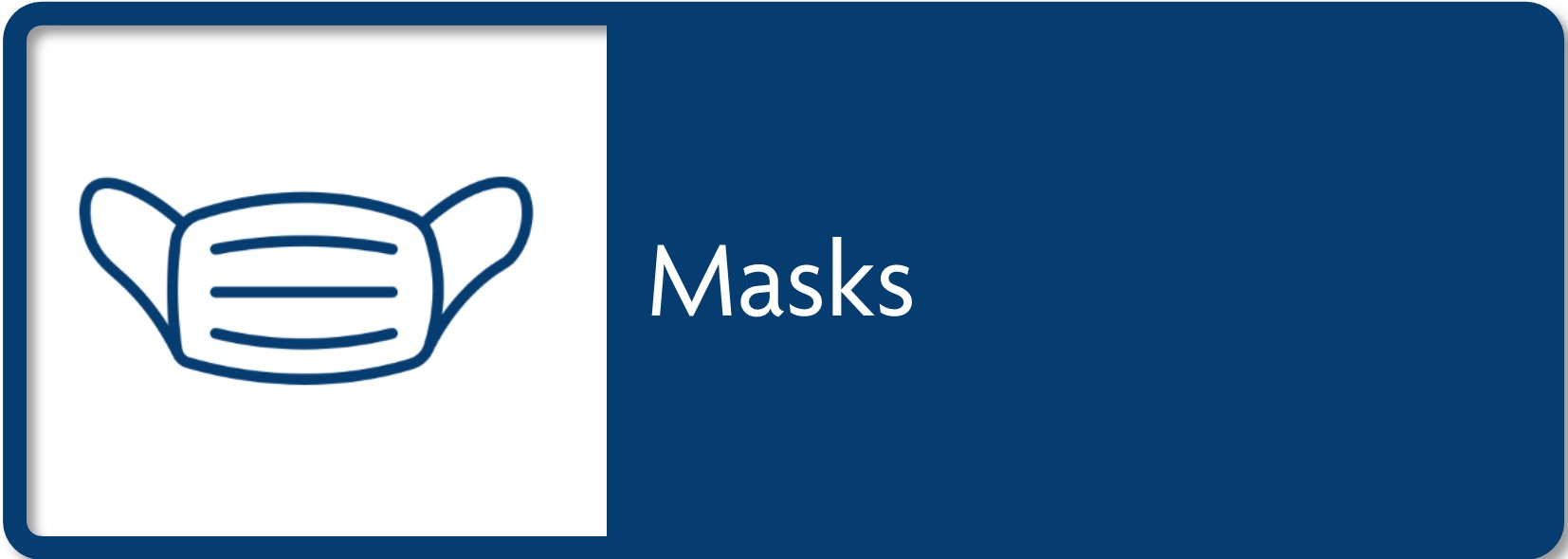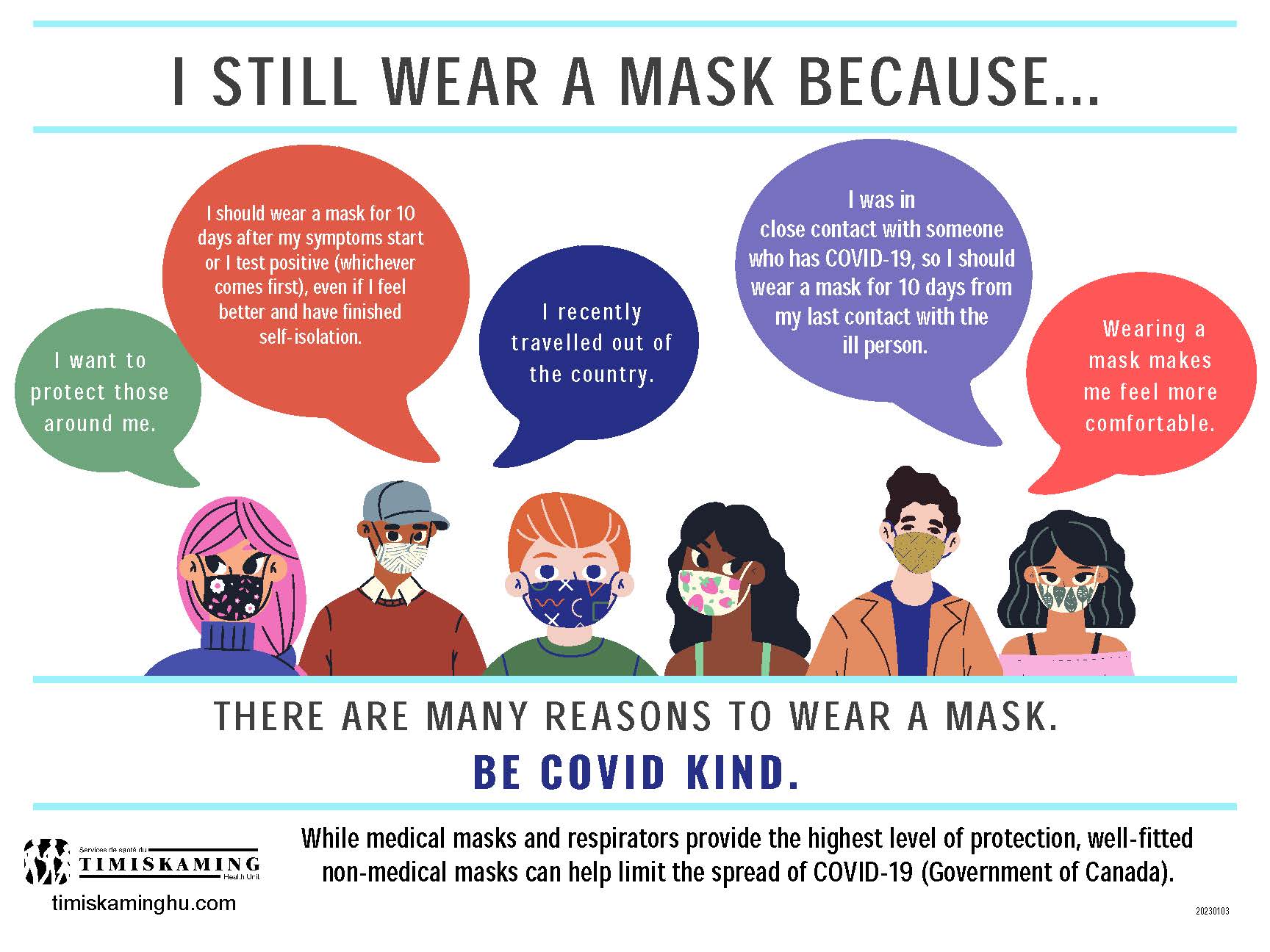
Masks

Should I wear a mask? Information about assessing my risk.
Now that masks are no longer mandatory, personal risk assessments are important to figure out whether you should continue to wear a mask. We ask that everyone be COVID kind and respectful of others’ choices.
You should wear a mask if your symptoms started or you have tested positive for COVID-19 in the past 10 days, if you are a close contact of someone with COVID-19, or if you live with someone who is ill.
You may want to continue wearing a mask if:
- You or someone in your social circle is immunocompromised, is pregnant or has recently given birth, has underlying health conditions, or is an older adult.
- You or someone you live with is unvaccinated or is too young to be vaccinated.
- You are visiting someone at a higher risk of severe illness. Note that some disabilities are invisible, and do not assume that others are low risk.
- You feel more comfortable wearing a mask.
These situations are called the “3 C’s to Avoid” because they have a higher risk of COVID-19 transmission. You may want to continue wearing a mask in these situations:
- Crowded places with many people nearby
- Confined and enclosed spaces with poor ventilation
- Close contact settings, especially where people have close-range conversations.
20231128/ml:nd